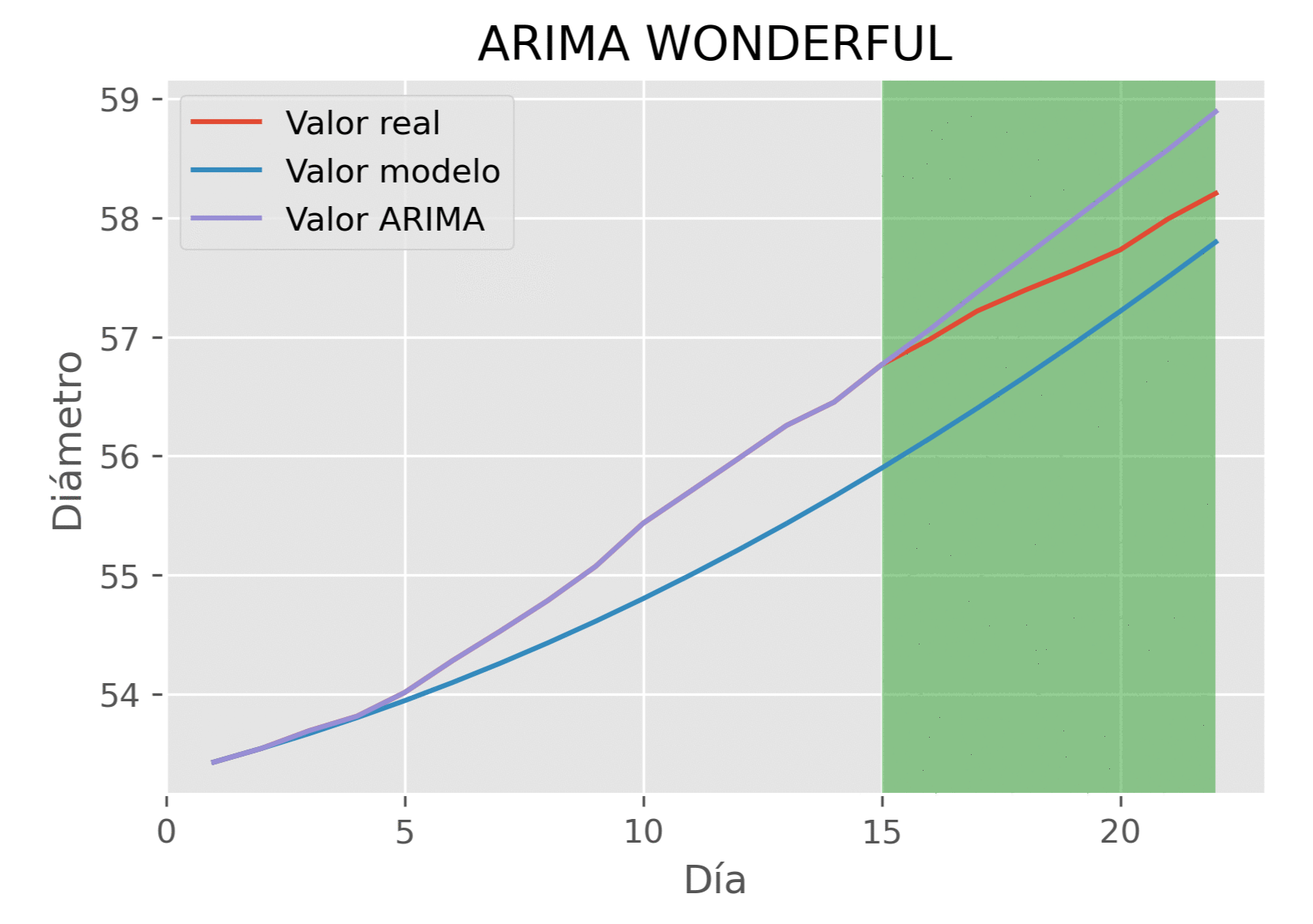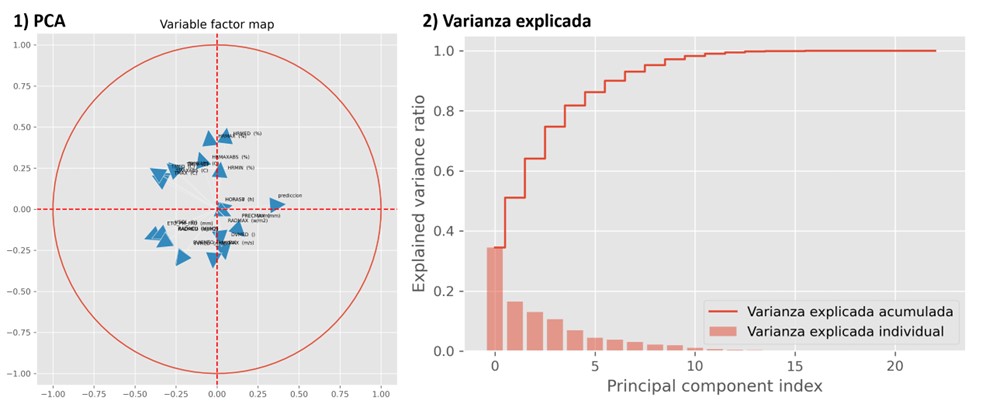We have previously discussed the usefulness of DendroFruit as a tool to monitor whether there are problems, to set management objectives, and to understand what is needed to achieve them.
The tool can be used for fruit size forecasting, alongside climate data, allowing us to stay alert to conditions that affect fruit quality.
In this case, we take the collected data one step further to create a weekly work tool: the ARIMA model for size prediction.

This is not a conventional forecast that relies solely on past size data to predict harvest sizes.
In this case, climatic variables are also taken into account.
Climate data is recorded from the beginning of flowering (day 1) up to the current date.
Between days 1 and 16 after flowering, the stored data is used to build an ARIMA model.
This model allows predicting the expected fruit growth based on previous size and climate data.
From day 16 onwards, the model is updated daily until the end of the season, providing continuous predictions.
In this way, the model refines the final size forecast according to observed data from both climate and fruit diameter.
Before introducing the variables into the model, dimensionality is reduced using a Principal Component Analysis (PCA), allowing us to retain only the most explanatory variables. The graph shows that the arrows (variables) point in different directions. The closer an arrow is to an axis, the greater its contribution to that principal component.
We can see that the importance of the variables in the analysis (arrow length) does not vary much, and many of them are very close to each other.
This means that many of the variables are highly correlated with one another and will contribute little new information to the prediction.
As shown in the explained variance graph, two principal components — grouping a certain number of variables — account for more than 50% of the total variance observed in the prediction.

By incorporating the principal components into the analysis, the ARIMA model uses data provided by DendroFruit together with the set of climatic variables, updating the forecast daily for the next seven days.
Comparing this information with that provided by different climatic variables (temperature, precipitation, relative humidity, evapotranspiration, radiation, and wind speed) gives a more accurate week-to-week understanding of crop development.
For example, if irrigation decisions are based on evapotranspiration data and the weekly forecast shows unfavorable conditions for fruit size growth, irrigation schedules can be adjusted in time to prevent losses.
In this way, short-term planning is based on the actual development we observe in the field.
Similarly, if relative humidity rises sharply and fruit growth slows, we can act quickly and take corrective measures, such as ventilating the plot.
This allows us to anticipate problems and make informed decisions.
In summary, combining data from DendroFruit with climatic information enables real-time monitoring of fruit development and weather conditions, allowing rapid detection and management of anomalies.


